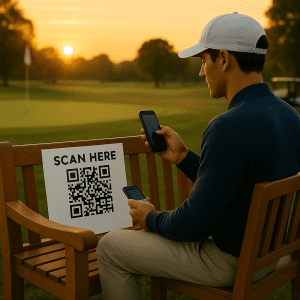Shopper Marketing Examples Are Evolving—Now with Brain Science
The days of relying purely on demographic data and sales lift to shape in-store advertising are fading fast. Today’s most successful shopper marketing campaigns are fueled by something deeper: neuromarketing.
Marketers want to know not just what people buy, but why they buy it—and more importantly, how to influence that decision at the exact moment it matters. That’s where neuromarketing comes in.
In this blog, we’ll explore the science behind neuromarketing, how it can be applied to create more effective shopper marketing ads, and real-world shopper marketing examples that use brain-based insights to drive retail performance.
What Is Neuromarketing—and Why Should Shopper Marketers Care?
Neuromarketing is the practice of applying neuroscience and psychological principles to marketing. Instead of relying solely on what people say, it analyzes what people feel and experience using:
Eye tracking
EEG brainwave data
Facial coding
Biometrics like heart rate or skin conductance
For shopper marketing advertising, this translates into more engaging displays, signage, packaging, and even retail layouts—based on how the brain reacts in real time.
The result? Deeper emotional impact, stronger memory recall, and faster decision-making.
Shopper Marketing Examples Where Neuromarketing Made a Difference
Let’s look at shopper marketing campaign examples that tapped into the subconscious to drive action.
🧠 Example 1: Frito-Lay’s Packaging Redesign Based on Brain Scans
Frito-Lay used EEG and eye-tracking to measure women’s brain responses to different chip bag designs. The research found that glossy bags triggered guilt (associated with indulgence), while matte bags appeared more natural and healthy.
The brand switched to matte packaging—and sales climbed.
This is one of the best shopper marketing examples that proves how a shopper marketing ad can be optimized before launch with the help of neuroscience.
🧠 Example 2: Campbell’s Soup and Emotional Heat Mapping
Campbell’s partnered with a neuromarketing firm to analyze how people felt when looking at soup labels. Heat mapping and facial coding revealed that certain label elements (like the spoon image) didn’t evoke emotion.
They redesigned packaging to focus more on emotive colors and simplified text, resulting in increased shelf engagement and sales.
These types of examples of shopper marketing reveal the power of visual hierarchy, mood-driven color, and emotional triggers.
Applying Neuromarketing to Your Own Shopper Marketing Strategy
🔍 Step 1: Use Eye Tracking for Display Placement
Studies show that shoppers scan a shelf in a “Z” pattern. But most shopper marketing ads fail to leverage this pattern.
Use neuromarketing tools to discover:
Where people naturally look first
Which product zones they ignore
How long they engage with signage or packaging
You’ll quickly learn that your shopper marketing ad needs to be where attention naturally flows—not just where you have space.
🎯 Step 2: Trigger Emotion with Colors and Imagery
Emotions drive purchases far more than logic. Neuromarketing tells us:
Red triggers urgency (think “limited time only”)
Blue builds trust (perfect for pharmaceuticals or banks)
Green feels natural (used often in organic food packaging)
Your shopper marketing strategy examples should consider emotional framing as much as messaging.
🧪 Step 3: A/B Test With Biometrics (Not Just Clicks)
Traditional A/B testing looks at outcomes (sales, clicks). Neuromarketing allows you to test emotional responses instead.
Before you finalize a shopper marketing ad, test different versions using:
Facial coding to measure joy or surprise
Heart rate monitors for excitement
Pupil dilation to measure interest
This approach leads to higher engagement before you spend on a full rollout.
💬 Step 4: Optimize Messaging for the Subconscious
Words like “new,” “limited,” “now,” and “discover” are proven neuromarketing triggers. These cues activate curiosity and dopamine.
Great shopper marketing advertising leans into emotional language, not just feature lists.
Bonus Tip: Use Neuroscience for In-Hand Shopper Marketing
In-hand ads—like pharmacy bags, coffee sleeves, or delivery boxes—benefit even more from neuromarketing because they:
Engage multiple senses (touch + sight)
Have longer dwell time
Often reach consumers during downtime, when the brain is more receptive
This format creates stronger memory encoding than fleeting digital or OOH placements like posters or subway ads.
One of the most underrated shopper marketing examples is a branded takeout bag with a call-to-action and a QR code leading to an instant coupon. It’s tactile, targeted, and brain-triggering.
Top 5 Brain-Based Tips for Your Next Shopper Marketing Campaign
Use emotionally charged images to connect faster
Simplify choices—too many options can overwhelm the brain
Place key offers at eye level using eye-tracking insights
Add urgency with countdowns or exclusivity
Focus on sensory-rich, tactile experiences (where in-hand formats win)
Why This Matters: Shopper Decisions Are 95% Subconscious
Harvard research confirms that up to 95% of purchase decisions are made subconsciously. That means your most logical, data-rich, perfectly optimized shopper marketing ad might flop if it doesn’t trigger an emotional or sensory response.
Neuromarketing gives you the tools to pre-test and pre-optimize your campaign before it ever hits a shelf.
It moves you from guessing to knowing, from observing to influencing.
Final Thoughts: Shopper Marketing Examples That Speak to the Brain—and the Heart
As marketing evolves, it’s not enough to ask what’s trending. We need to ask: what’s working neurologically?
From shelf placement to packaging, messaging to mood—understanding the brain’s response to your campaign is no longer a luxury. It’s a competitive advantage.
So the next time you brainstorm a shopper marketing campaign example, remember: the brain buys first, and the wallet follows.






